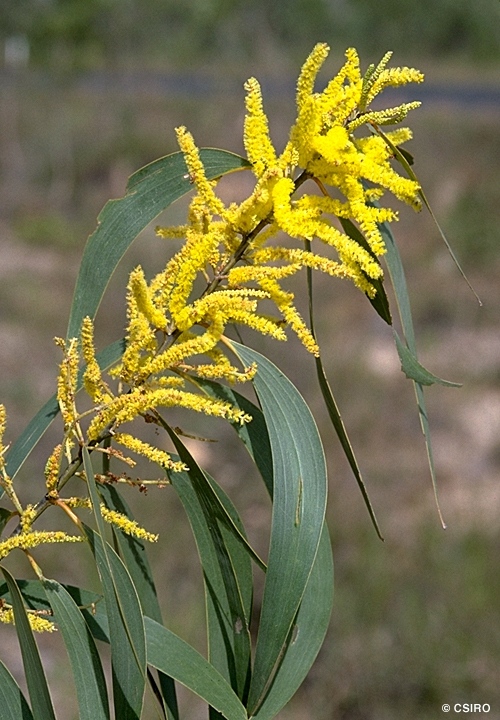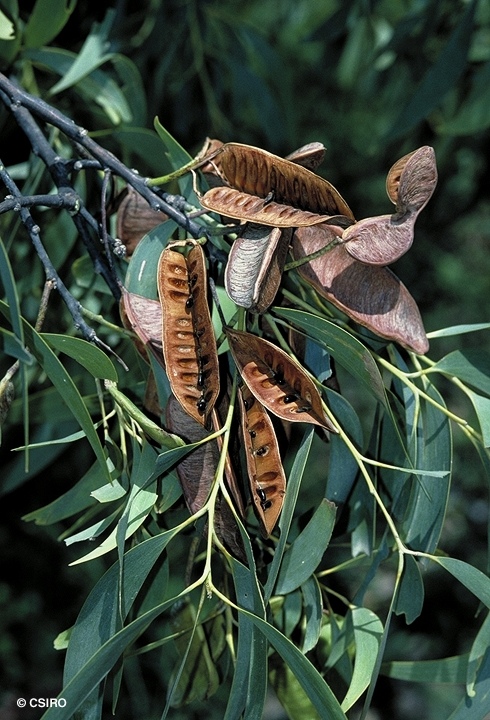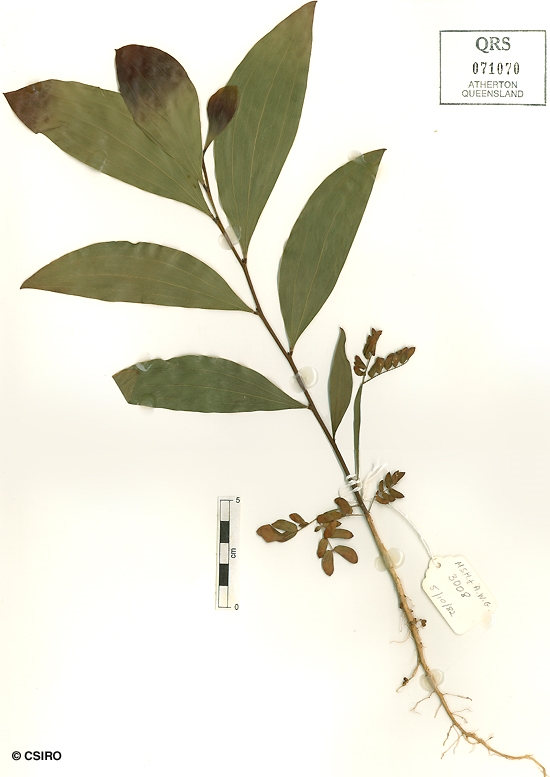Australian Tropical Rainforest Plants - Online edition
Acacia crassicarpa A.Cunn. ex Benth.





Bentham, G. (1842) The London Journal of Botany 1: 379. Type: N. Coast, Bauer, Lizard Island, Cunningham.
Wattle, Northern Territory; Brown Salwood; Wattle, Northern; Northern Wattle; Northern Territory Wattle; Northern Golden Wattle; Lancewood; Salwood, Thick-podded; Thick-podded Salwood
Dead bark layered. Living bark strong and fibrous.
Leafy twigs somewhat angular in section. Leaves phyllodineous, somewhat glaucous, usually with seven veins more prominent than the rest, veins parallel, not anastomosing and the margins also thickened like veins. Leaf blades about 11-20 x 1-3.5 cm. A gland usually visible on the upper surface of the leaf blade-petiole junction.
Spikes yellow, moderately dense, about 4.5-6 cm long, on scurfy peduncles about 5-10 mm long, in groups of about 2-6 in the upper axils. Calyx about 0.5-0.7 mm long, membranous, +/- glabrous with scurfy lobes. Corolla widely spreading, glabrous, about 1.3-1.6 mm long, about 2-3 times as long as the calyx, lobes about as long as the tube. Stamens about 2-3 mm long. Ovary shortly pubescent.
Pod woody, flat, margins +/- straight, transversely veined but only slightly reticulately veined, up to 8 x 2.5-3.5 cm. Seeds shiny black, transversely oriented in the pod, about 6 x 3 mm. Funicle white, folded and thickened, forming a long aril-like structure beneath the seed. Pods normally present beneath mature trees.
Cotyledons oblong, about 6-8 mm long. First leaf pinnate, second leaf bipinnate. By the third or fourth leaf stage: leaves bipinnate, petiole expanded and flattened. At the tenth leaf stage: leaves phyllodineous, +/- elliptic, unequal-sided, glabrous, about 3-5 (usually three) main veins run from the base to the apex; a single crater-like gland present on the edge of the leaf blade near the petiole; stipules very small, only just visible with a lens. Seed germination time 10 to 122 days.
Occurs in CYP, NEQ and CEQ. Altitudinal range from sea level to 600 m. Grows in beach forest and open forest, particularly on sand, but also occurs in and on the margin of rain forest. This species is favoured by disturbance and is a characteristic species in regrowth. Also occurs in New Guinea.
Food plant for the larval stages of the Northern Imperial Blue Butterfly. Common & Waterhouse (1981).
Often cultivated on beaches as it provides good shade.





